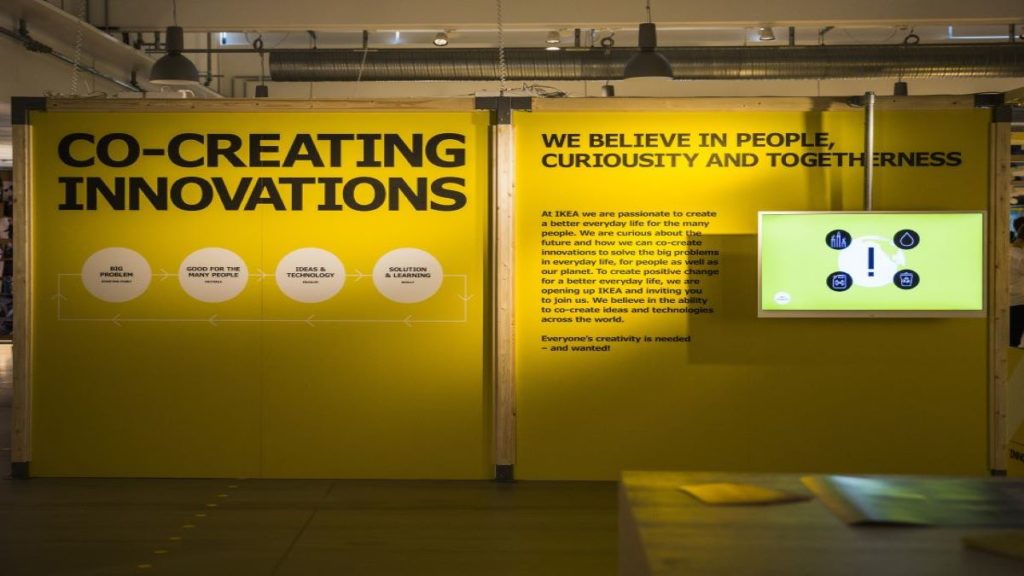In the acceleration economy, the business landscape is becoming increasingly collaborative. Rather than siloing technologies and focusing on independent strategies, many large-scale organizations are working collaboratively to improve their products and services and increase visibility.
From a co-branding perspective, take BMW and Louis Vuitton’s “The Art of Travel” campaign. In it, the two seemingly unconnected brands joined forces to launch a pair of connected products. BMW revealed the new i8, while Louis Vuitton launched a set of designer luggage designed to fit perfectly in the car’s rear parcel shelf.
Other partnerships add mutual value to existing products and services. One example is the Meta/Microsoft collaboration designed to provide users of Meta’s Quest headsets access to Microsoft’s productivity suite. In another example, Apple’s collaborative partnership with SAP enabled the firm to launch critical new internal applications 40% faster.
Yet, today, the co-create concept is advancing beyond the boundaries of the collaborative business space. Now, organizations look to their customers for inspiration, guidance, and product development. In this article, we’ll explain the benefits of this approach, cite some significant examples of where and how it’s in use, and explore how this may affect the business innovation pathways of the future.
The Customer Is Always Right
Deeper customer engagement is nothing new. Since the digitization and migration of businesses to the internet, companies have had to adapt to a climate of greater scrutiny and the expectation of consistent customer feedback.
Of course, in most cases, this has led to improved customer services, better targeting, and increased transparency. Today, this advancement in customer engagement is reaching new heights, with some companies co-creating directly with customers.
Connectivity is driving this push for customer-centric co-creation. Like so many of the advances brought on by the pandemic — a greater proliferation of business apps, the Zoom-boom, the hybrid work model — connecting with customers has become easier than ever. Now, customers in countless industries are more proficient with digital communications technologies and, in many cases, more active online, particularly in the e-commerce sector.
This shift has created an opportunity to crowdsource ideas and generate improvements through collaborative customer partnerships. And many organizations are taking advantage of the circumstances to give their customers exactly what they want.
Who’s Doing It?
Co-creation with customers and stakeholders didn’t emerge in 2022. Companies like IKEA, with its Co-Create IKEA concept, have been experimenting with the idea since the latter half of the 2010s. The difference today is that the sheer volume of participants, the speed at which companies can convert ideas into digital models, and the low barrier to entry have made customer collaboration easier and more effective than ever before.
Customer Collaboration is moving from a niche experimental process to one that is quickly becoming mainstream, whose outcomes are more profound and far-reaching.
One company championing this model is ams OSRAM, a Germany-based lighting manufacturer. It has recently launched its Global Partner Network to co-create new products directly with customers, and it is fast becoming an integral part of the company’s business development strategy.
T-shirt brand Threadless has turned co-creation into a business model. The company actively requests T-shirt designs from its customers and uses a voting mechanism to determine which design goes into production.
Enabling customers to make product and design decisions is a natural evolution of the feedback form. Of course, companies are always at liberty to reject proposals, and customer collaboration is governed. However, the opportunity to work alongside and not for your consumers has become an increasingly attractive draw for companies.
Wrap-Up
In an era of unprecedented growth and competition, where every organization has equal access to game-changing cloud technologies, the voice of your customer is your most potent differentiator.
Never before has customer opinion and insight mattered so much. To build better solutions, you need to have the right tools and people behind them. Perhaps some of those people will be end users who could know your business better than you do.
For more exclusive coverage of innovative cloud companies, check out Cloud Wars Horizon here:









